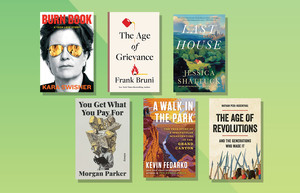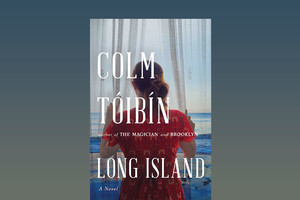The conventional wisdom about Herbert L. Matthews, The New York Times, and Fidel Castro is that Matthews ’22CC, wittingly or not, used the pages of the Times to put Castro into power. The conventional wisdom is divided as to whether this was a Bad Thing or a Good Thing.
That is a severe oversimplification, as Anthony DePalma shows. In The Man Who Invented Fidel (Matthews’s own phrase), DePalma — who as Times bureau chief in Havana was assigned in 2001 to write a standby obituary of Fidel Castro — has given us a meticulous, unsparing, yet compassionate account of Herbert Matthews’s life, his best-known work, and the newspaper for which he did it.
Matthews (1900–1977) rose to the front and editorial pages of the Times before the age of academic hatcheries for journalists. Columbia’s School of Journalism had been open for seven years when Matthews came to Morningside Heights, but he was aiming for an academic career. He studied Romance languages at the College and, after joining the Times as an assistant to the business manager, continued on to graduate study for what he hoped would be a PhD. (The hope went unfulfilled.)
The fluent Spanish he gained from these studies was to facilitate his major achievements in Spain and Cuba; his Italian proved useful in covering Italy’s 1936 invasion of Ethiopia and the following year in Spain, where he was able to interview members of the allegedly nonexistent Italian forces.
“In March 1937, Franco’s forces swooped down toward the Spanish city of Guadalajara, north of Madrid,” writes DePalma. Matthews “drove to the front, where he got his first eyewitness view of the familiar Italian troops he had followed to Abyssinia.
“The battleground was littered with Italian tanks, Italian rifles, and Italian dead. The Loyalists had captured Italian troops and Matthews spoke to the prisoners of war in Italian, confirming their identities and providing proof that despite all pledges of noninterference, Mussolini had done more than simply lend technical advisers to the rebels as he claimed.”
In a foreshadowing of its treatment of David Halberstam’s dispatches from Vietnam, the Times rewrote Matthews’s description of the soldiers and equipment he had seen from “Italian and nothing but Italian” to “Insurgent and nothing but Insurgent,” an edit as leaden as it was dishonest.
Matthews was in Italy at the outbreak of WWII and was interned when the U.S. joined in. Finally exchanged, he was sent to India and returned to Italy with the U.S. invasion forces. After the war, he went back to New York, where Times publisher Arthur Hays Sulzberger gave Matthews the unparalleled position of a seat on the editorial board while he was still an active correspondent.
Despite his hopes to be a scholar and his position as an editorialist, Matthews retained the journalist’s passion to be where the news was. At the beginning of 1957, although in uncertain health, he jumped at the chance to interview Fidel Castro in the Sierra Maestra. News from Cuba was tightly censored under Batista, and the official line was that Castro had been killed in his failed invasion.
Matthews reached Castro at considerable personal risk, and the two men found each other muy simpático. Castro’s legendary flair for public relations ensured that even a reporter of Matthews’s abilities overestimated the strength of his forces and his devotion to Jeffersonian democracy.
But the crucial impact of the three articles that the Times ran in February 1957 was the news that Castro was alive and in the field. This information penetrated Batista’s censorship and resurrected Castro in the popular mind.
Not that Matthews limited himself to a simple flash! Castro alive and well! As Castro assured him, “We are fighting for a democratic Cuba and an end to the dictatorship.” “La dictadura,” presumably the noun Castro used, inescapably carried the definite article; “the dictatorship” was possibly that of Batista, not necessarily that of Castro, nor, for that matter, of the proletariat.
Matthews, writing in the Times, may have led his readers to broaden Castro’s horizon beyond Fidel’s gaze. Describing what would follow victory over Batista, he used language with extraordinary resonance for Americans: “It amounts to a new deal for Cuba . . . radical, democratic, and therefore anti-Communist.”
In the years that followed, Matthews repeatedly visited Cuba as a privileged guest. In his reports, he insisted that the Cuban revolution was in no sense Communist; when in 1961 Castro publicly embraced Marxism-Leninism and allied Cuba with the Soviet Union, Matthews fell back on the claim that Castro had not been a Communist before taking power.
The effect on his journalistic reputation was disastrous. DePalma’s detailed narrative of how a generation of Times editors dealt with the Matthews problem is one of the best things in the book. Their reporter brought some baggage to the Cuba controversy: in the 1930s he had been briefly enamored of Mussolini, and his reporting from Spain led to exaggerated charges of partisan bias. His editors, unhappy with his dual role as editorial writer and reporter, increasingly saw him as entangled, emotionally if not ideologically, in the story he was covering. In the end, he was forbidden to report on Cuba, although he continued to editorialize until his retirement in 1967. Matthews himself said that, given the controversy, no other paper would have given him so long a run.
DePalma makes clear that Matthews was a reporter of parts, one who until the day he died believed he had written nothing but the truth about Cuba and Castro. For his pains, he was subjected to outrageous surveillance by the FBI and the CIA and to brutal mistreatment by the Senate’s Internal Security Subcommittee.
Although Castro would almost certainly have come to power had Matthews never written about him, the reporter propelled the rebel into the world’s consciousness as the heroic idealist still believed in by declining numbers on the fringes of the left.
In 2005, DePalma — sharing his subject’s passion to see where things happened — traveled Matthews’s path to the Sierra Maestra and the place where he met with Castro. It was not easy, but as proof that his guides knew what they were about, at length DePalma stood looking at a commemorative marker set up in 1997. This was the only apparent change in the area in the 40 years since the encounter. The peasants there lived as they had in the last year of Batista. But not without hope: they told DePalma, “Castro cannot live much longer.”
Samuel McCracken, a critic and essayist living in Boston, is working on a book about nuclear power and global warming.


